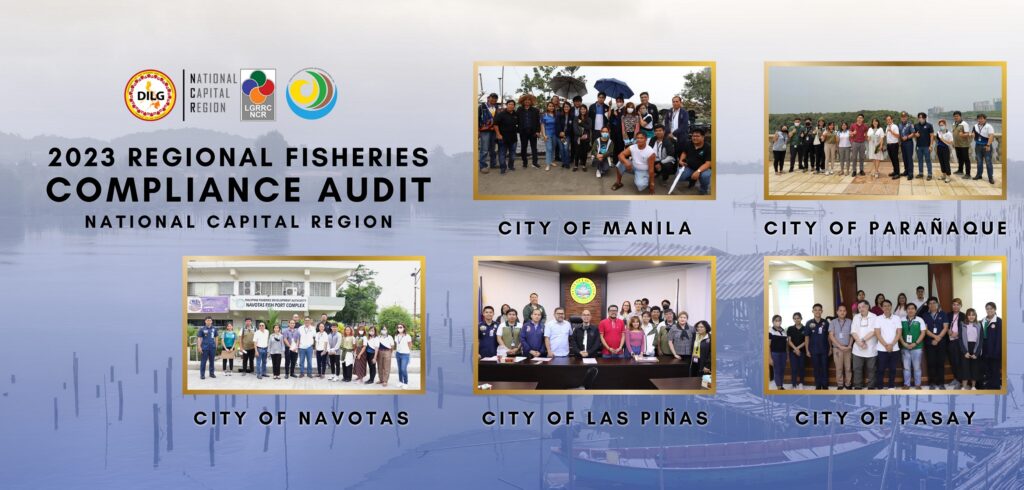
The DILG-NCR, through the Manila Bay Clean-Up, Rehabilitation, and Preservation Program Management Team (MBCRPP-PMT), conducted the 2023 Regional Fisheries Compliance Audit (FishCA) from April 12 to 19, 2023.
The FishCA assesses the local government units’ (LGUs) implementation of policies related to the management of municipal waters and aquatic resources in the National Capital Region.
The Regional Validation Team (RVT), composed of the DILG-NCR, Department of Agriculture – Bureau of Fisheries and Aquatic Resources (DA-BFAR) – NCR, Department of Environment and Natural Resources (DENR) – NCR, Department of Human Settlements and Urban Development (DHSUD) – NCR, PNP-Maritime Group and two non-government organizations: Pangisda Pilipinas and Tanggol Kalikasan, evaluated the documents and Means of Verification (MOVs) submitted by concerned coastal LGUs relative to the DILG Memorandum Circular No. 2018-59 and R.A. No. 8550 (Philippine Fisheries Code of 1998) as amended by R.A. No. 10654. These MOVs were further verified through onsite inspection of facilities and local fishing communities.
After deliberation by and among members of the RVT held on April 28, 2023, the five coastal LGUs of NCR, particularly the Cities of Las Piñas, Manila, Navotas, Parañaque, and Pasay, were given their respective final assessment ratings, together with relevant recommendations, and ways forward which address the pressing issues faced by local fisherfolks and the local governments in the management of coastal waters.
One of the notable findings of the audit is the need to organize the region’s Integrated Fisheries and Aquatic Resource Management Councils (IFARMCs). By mobilizing local Barangay FARMCs and City FARMCs, local preservers may participate in making science-based decisions for the effective and sustainable management of the NCR’s coastal waters.
According to the Philippine Statistics Authority’s Fisheries Situation Report for 2022, the total fisheries production in the country grew to 4,339.89 thousand metric tons or by 2.2 percent, from the previous year’s output of 4,248.26 thousand metric tons. The National Capital Region alone has recorded 75.57 thousand metric tons, roughly 1.7 percent of the country’s fisheries production.
This statistical evidence generated and the findings arrived at during this year’s Audit prove the crucial role local governments play in implementing and enforcing their parallel ordinances pursuant to the Fisheries Code.
